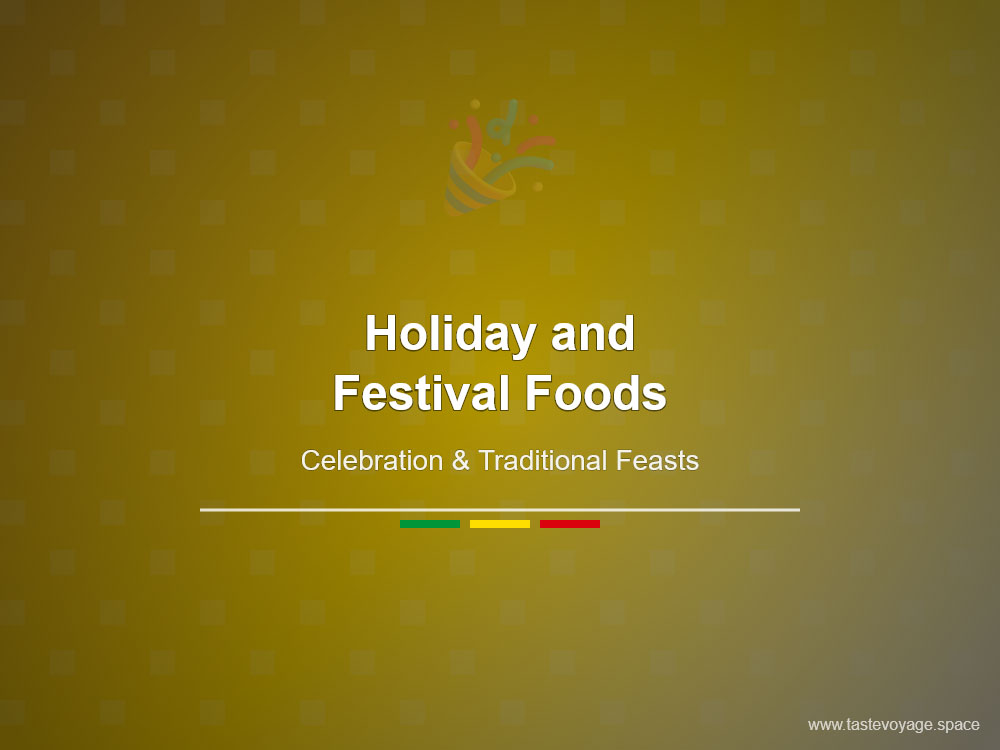Ultimate Ethiopian Cultural Festival Food Guide
Travel the World Through Food >> Ethiopian Cuisine>>Holiday and Festival Foods>> Ultimate Ethiopian Cultural Festival Food Guide
Ultimate Ethiopian Cultural Festival Food Guide
Ethiopian Cultural Festival Food Guide
Ethiopian cuisine is a vibrant tapestry woven with Rich flavors, ancient traditions, and a deep sense of community. At the heart of this culinary heritage lies the iconic dish served during cultural festivals—an offering that not only delights the senses but also embodies Ethiopia’s cultural identity. In this guide, we explore the significance of Ethiopian festival foods and their role in celebrating heritage, unity, and tradition.
The Cultural Significance of Ethiopian Festival Foods
Ethiopian festival foods are more than just delicious dishes; they are symbols of cultural pride and communal bonds. During festivals such as Enkutatash (Ethiopian New Year) and Meskel, families and communities come together to prepare and share special meals. These occasions foster a sense of togetherness and reinforce social ties, turning food into an expression of collective identity.
The preparation and sharing of festival foods follow age-old customs that have been passed down through generations. These traditions serve as a bridge connecting Ethiopians to their history and spiritual roots. For instance, specific dishes are reserved for celebrations, symbolizing blessings, prosperity, and renewal.
Culinary Significance and Unique Flavors
Ethiopian festival foods feature a distinctive array of flavors and ingredients that reflect the country’s diverse geography and cultural influences. Common staples include injera— a sourdough flatbread with a spongy texture—and an assortment of flavorful stews known as wats. These stews are often made with lentils, chickpeas, vegetables, and various meats, seasoned with a blend of spices called berbere.
What makes Ethiopian festival cuisine unique is the communal way of eating. Multiple dishes are served on a large share platter, with injera acting as both a plate and an utensil. This communal style fosters sharing and unity, emphasizing the importance of togetherness in Ethiopian culture.
Celebratory Foods and Their Symbolism
Certain dishes take center stage during festivals, each carrying its own symbolic meaning. For example, doro wat—a spicy chicken stew—is a festive favorite that symbolizes vitality and celebration. The use of fresh, vibrant ingredients reflects Ethiopia’s rich agricultural traditions and respect for seasonal produce.
In addition, vegetarian options like shiro (a chickpea flour stew) are popular, highlighting Ethiopia’s diverse dietary practices. These dishes showcase the country’s ability to create hearty, flavorful meals that cater to various preferences and occasions.
The Role of Food in Preserving Heritage
Food plays a vital role in preserving Ethiopia’s cultural heritage. During festivals, families meticulously prepare traditional dishes, passing down recipes and culinary techniques. This preservation fosters a sense of pride and continuity, ensuring that future generations continue to appreciate and celebrate their culinary roots.
Furthermore, festival foods serve as a window into Ethiopia’s history and social customs. They reflect the country’s deep respect for tradition, community, and the natural bounty of its land.
Conclusion: Celebrating Ethiopian Heritage Through Food
Ethiopian festival foods are much more than nourishing meals—they are a living expression of cultural identity and community spirit. Their rich flavors and Traditional Preparation methods highlight Ethiopia’s unique culinary landscape. By sharing and enjoying these dishes during festivals, Ethiopians celebrate their heritage, reinforce social bonds, and honor their history.
Whether you are a food lover or a cultural enthusiast, exploring Ethiopian festival foods offers A Delicious journey into a vibrant and enduring tradition. Embrace the flavors, appreciate the symbolism, and experience the warmth of Ethiopian hospitality through its celebrated culinary heritage.
